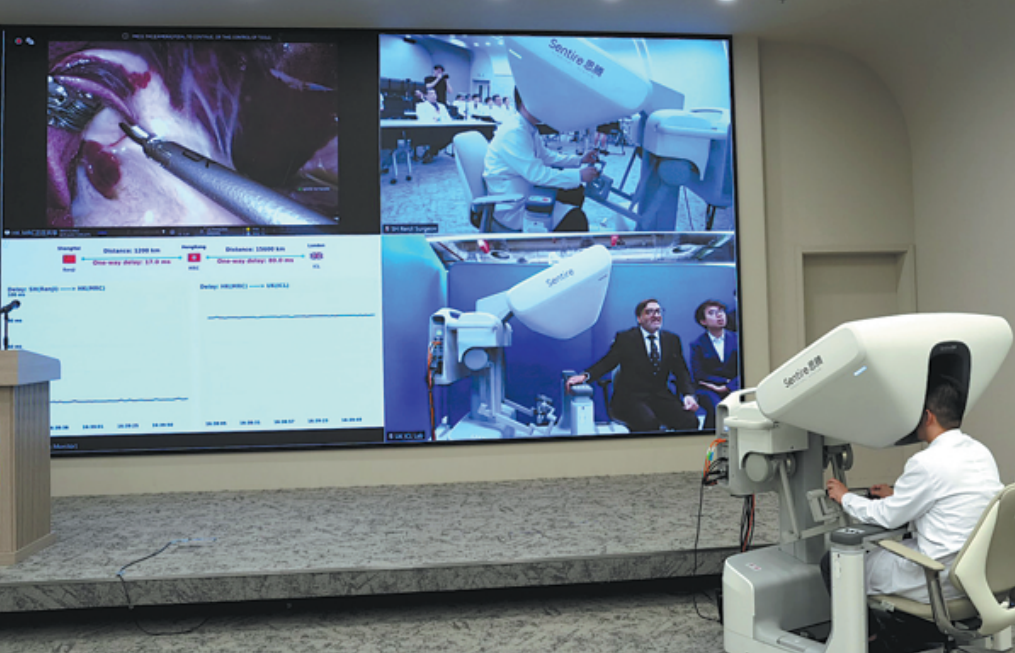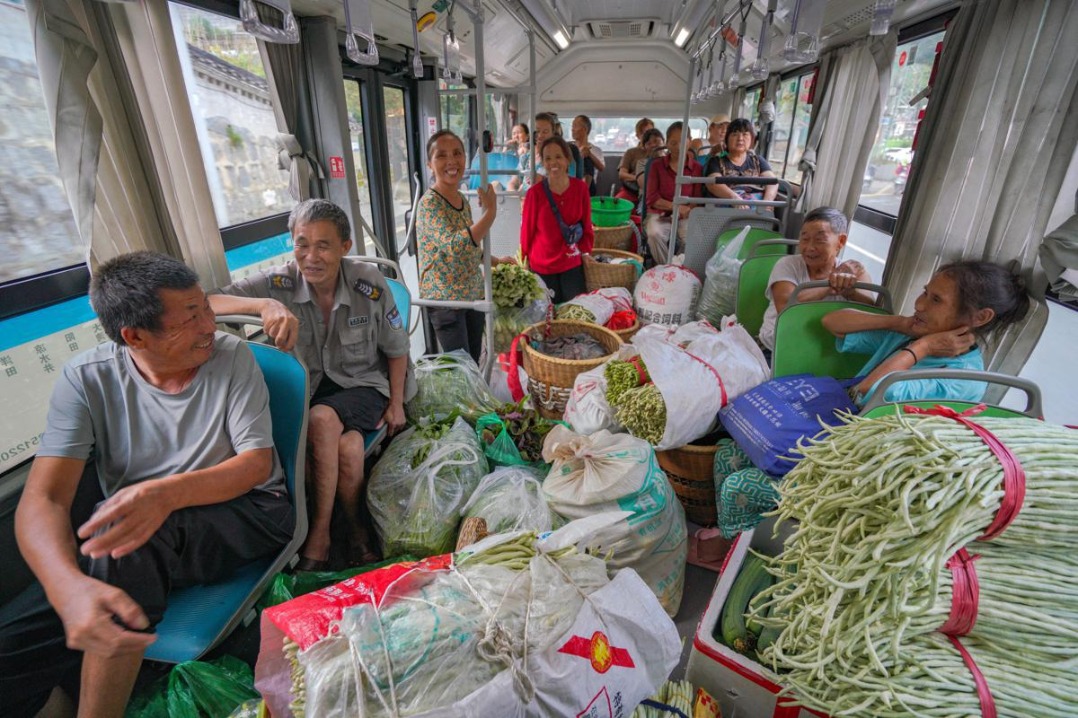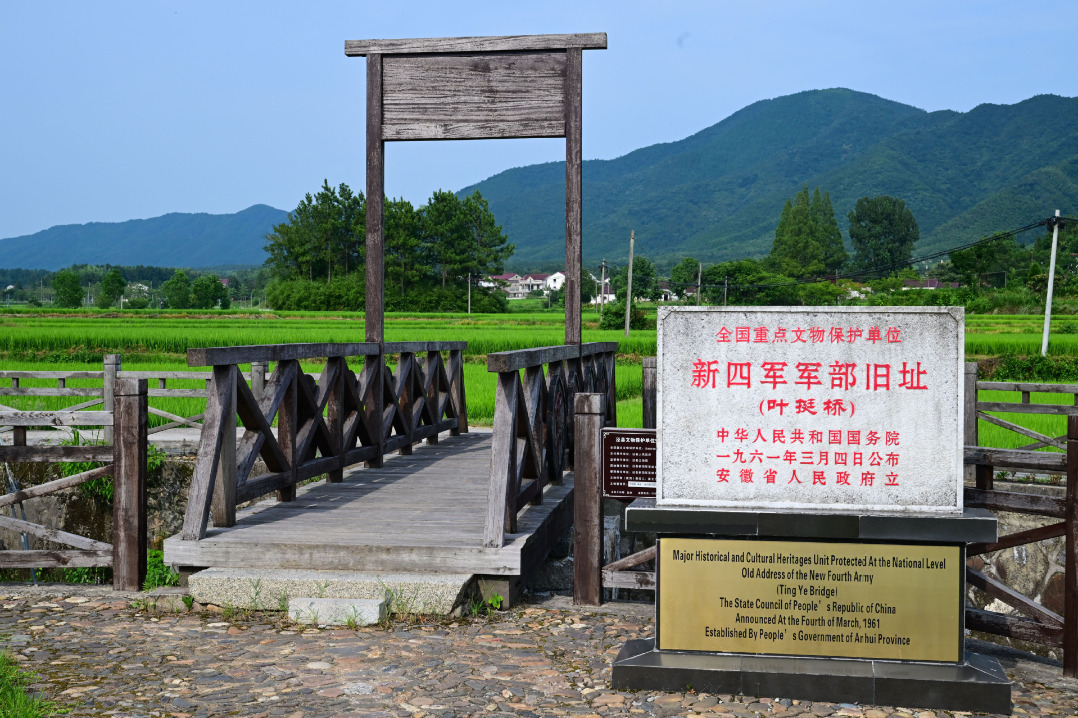Robotic surgery performed remotely


Three top surgical teams from China and the United Kingdom came together to conduct a remote robotic surgery spanning across continents on Thursday, with the medical teams saying it was like they were in the same operating theater.
Led by Shanghai Renji Hospital, in collaboration with the Chinese University of Hong Kong's Faculty of Medicine and London's Royal Marsden Hospital, the multisite coordinated surgery took place simultaneously in Shanghai, Hong Kong and London.
The experimental operation was performed on a pig in Hong Kong, and the doctors performed a relay laparoscopic robotic gastrectomy on it, using a domestically made remote platform of surgical robots.
Doctors from Renji Hospital, which is affiliated with Shanghai Jiao Tong University School of Medicine, said that the successful completion of the surgery not only validated the stability, precision and adaptability in multiple places of Chinese surgical robotic technology in remote clinical applications, but also demonstrated the potential for establishing highly efficient collaborative mechanisms across different countries and regions.
Zhang Zizhen, director of the gastrointestinal surgery department at Renji Hospital, was the first to connect to the surgical robotic system for remote operation. He completed the dissection and exposure of the gastroesophageal junction area smoothly, saying that the image quality of the system was clear and precise.
Subsequently, control of the surgery was transferred to the London team. Asif Chaudry, chief expert of upper gastrointestinal surgery at the hospital, maneuvered the robotic system to separate the stomach from the colon, pancreas and spleen, exposing the blood supplying arteries of the major organs in the upper abdominal cavity, and meticulously clearing the lymph nodes in the area.
Throughout the operation, he maintained real-time communication with experts in Shanghai and Hong Kong via voice conversation, praising the instant response of the surgical operating system, and saying that "it was as if he were right beside the 'patient'".
At the Hong Kong site, doctors were responsible for monitoring and system support throughout the surgery, ensuring the smooth operation of the system and providing clinical support to the surgical teams at the other two locations.
Lasting approximately one hour, the surgery was said by the teams to feature clear image transmission, smooth command responses and seamless transitions of control among the three surgical teams, showcasing a tightly coordinated surgical process. Also, the surgical perspectives and anatomical views for the doctors at different locations were highly consistent, guaranteeing the continuity and safety of the surgery.
"Such a multisite collaborative practice across regions and time zones reflects the path of promoting the cross-regional flow of high-quality medical resources through technical means, and provides a feasible reference for the future realization of the telemedicine model, in which patients don't need to move, experts are online, and resource are shared," said Wang Zheng, vice-president of Shanghai Renji Hospital.
The hospital will work with experts from all over the world to jointly explore new paths for the development and collaboration of telemedicine technology, providing practical samples for the systematic development of smart medicine in China, and bringing more advanced and high-quality medical services to patients, he said.
Chaudry emphasized that interdisciplinary scientific research and digital innovation are continuously reshaping the future of global cancer treatment and care.
"The fusion of clinical leadership, robotic technology and translational medical research enabled the teams to transcend national boundaries, operating as a unified surgical team. This means that regardless of where patients are located on Earth, they will be able to receive professional and personalized treatment plans," he said.
Major hospitals in China have accumulated experience in remote surgery. Using domestically made 5G surgical robots, doctors at Shanghai Chest Hospital performed remote lung cancer surgery on a patient in Kashgar prefecture, Xinjiang Uygur autonomous region, which is 5,000 kilometers away, in July last year.
- Robotic surgery performed remotely
- Domestic single-dose flu drug approved
- Water mahjong games cool visitors in Chongqing
- Sanya to host sixth Asian Beach Games in April
- Guangdong, Hong Kong and Macao to jointly hold entrepreneurship competition
- China approves rice-derived recombinant human albumin injection





































